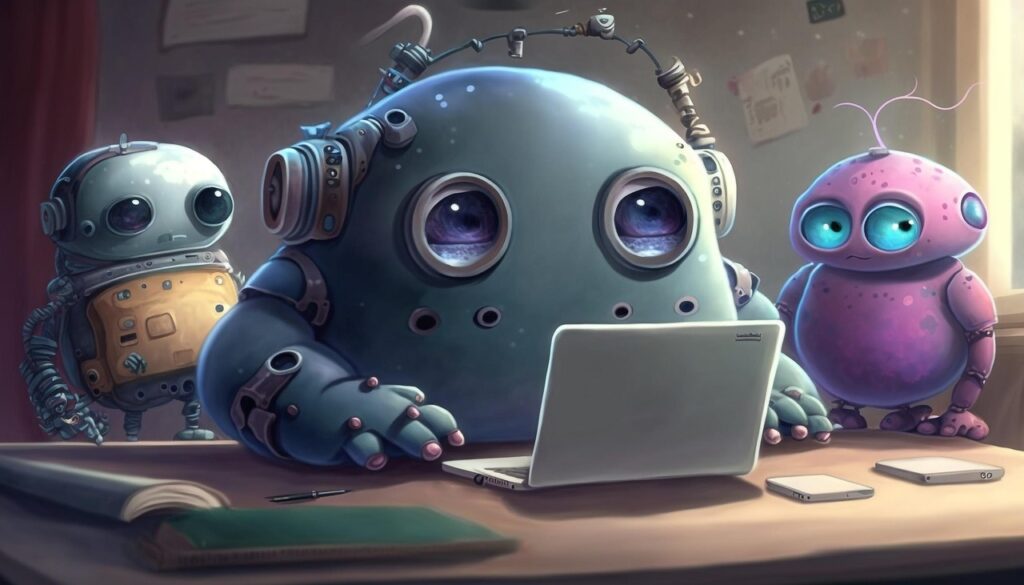AI chatbots have come a long way in the past decade, and in 2025, they are not just tools — they are game changers. From customer support to e-commerce, the future of AI chatbots is reshaping how businesses operate, engage, and grow.
Why the Future of AI Chatbots Matters
The global chatbot market is projected to reach over $27 billion by 2030, showing massive adoption across industries. What makes the future of AI chatbots so impactful is their ability to understand human language, automate tasks, and deliver seamless experiences — all at scale.
In 2025, companies are no longer asking if they should use chatbots. They’re focused on how to use them more effectively.

How AI Chatbots Are Powering Customer Service in 2025
Customer support is often where businesses lose or gain trust. AI chatbots in 2025 are far more advanced, capable of:
- 24/7 real-time responses
- Multilingual conversations
- Understanding emotions through sentiment analysis
- Escalating complex issues to human agents instantly
For example, many e-commerce companies now deploy AI chatbots that reduce support costs by 40% while increasing customer satisfaction. This evolution is fueled by natural language processing (NLP), which allows bots to sound more human than ever before.
Revolutionizing Sales and Marketing with AI Chatbots
The future of AI chatbots is also changing how businesses sell. In 2025, AI-driven chatbots help guide users through product discovery, answer questions, offer personalized discounts, and even close sales.
According to a report by TechCrunch, companies using AI chatbots in their sales funnel see up to 3x more conversions. These bots work 24/7, making sure no lead is ever missed — and every opportunity is nurtured.
Smarter Automation, Happier Teams
AI chatbots don’t just serve customers — they support internal teams too. In 2025, many businesses use chatbots for HR queries, IT support, onboarding processes, and even performance tracking.
As a result, teams spend less time on repetitive tasks and more time on what matters — strategy and creativity.
Furthermore, this automation ensures consistency, reduces human error, and enhances productivity across departments.
Real-World Applications in 2025
Let’s look at a few practical examples of how the future of AI chatbots is being realized:
- Healthcare: Chatbots schedule appointments, remind patients of medications, and provide symptom checks.
- Banking: Bots assist in fraud detection, balance inquiries, and loan applications.
- Retail: Chatbots offer personalized shopping experiences, recommend products, and manage returns efficiently.
These examples highlight that AI chatbots are not limited to tech companies — they’re transforming traditional sectors too.
Challenges and Ethical Considerations
While the growth is exciting, it’s not without concerns. Businesses must address:
- Privacy: Ensuring data collected by chatbots is secure.
- Bias: Avoiding AI decisions based on biased data.
- Transparency: Letting users know when they’re speaking with a bot.
Being transparent and ethical is key to building trust in AI interactions.
How to Prepare Your Business for the Future of AI Chatbots
To stay ahead in 2025, companies should:
- Identify key areas for automation
- Invest in chatbot platforms that use NLP and machine learning
- Train teams to work alongside bots
- Continuously evaluate chatbot performance and user satisfaction
Additionally, businesses should review resources like [this internal article link] to get started with chatbot integration.
Conclusion: Embracing the AI-Powered Future
The future of AI chatbots is not science fiction — it’s the new standard. In 2025, businesses that embrace chatbot technology are seeing faster growth, happier customers, and more efficient teams.
As AI continues to evolve, chatbots will only get smarter. For businesses, the choice is simple: adapt and lead — or fall behind.
